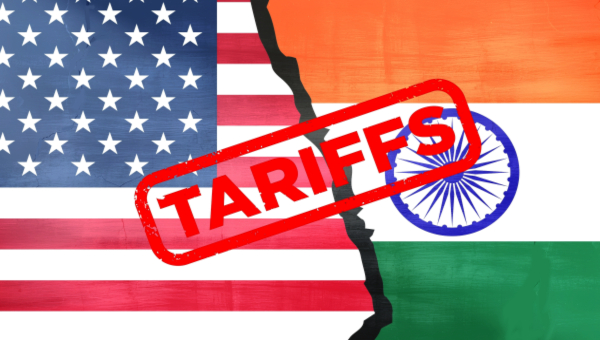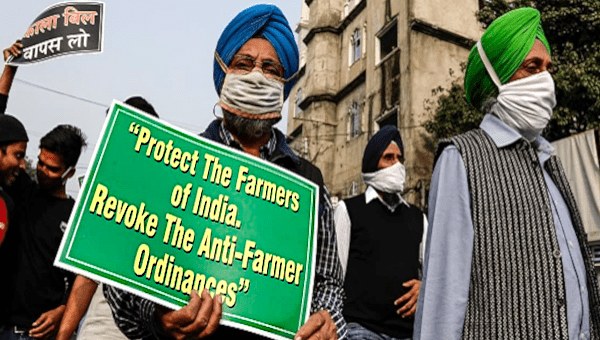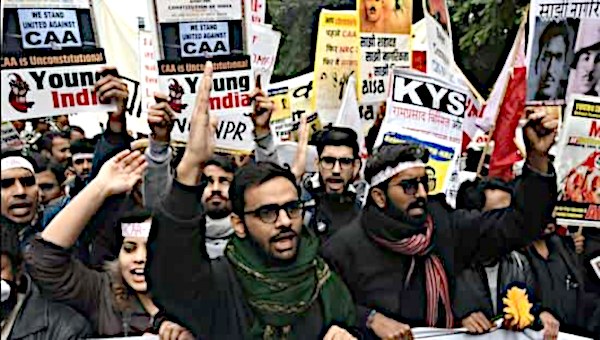Neoliberalism’s Toll: Impacts on India’s Peasants and Workers
This article deals with the impact of the neoliberal policies pursued since 1991, on the working people of India, and in particular on poor peasants and wage labourers. It is now three decades since neoliberal policies – popularly known as LPG (Liberalization, Privatization, and Globalization) policies have been in place, pursued vigorously by both the Congress Party-led governments and the BJP-led coalitions, at the Centre and in most of the States.
The regional parties, of whom several had earlier opposed LPG policies, gradually came around to accepting and implementing these policies as they sought to retain power in their respective states through a process of political collaboration with either the Congress or the BJP.1 The Left-ruled states and Left Parties have been more or less alone in opposing the LPG policies both theoretically and on the ground.
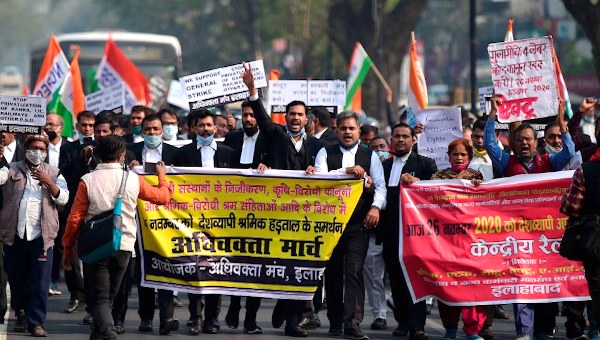
LPG Policies
LPG policies involve deregulation of the economy, opening it up as widely as possible to private capital, and opening up the nation as widely as possible to foreign capital. Specifically, deregulation (also called liberalization) means the removal of regulations governing the operations of private companies, especially the large ones. In other words, it frees these companies from the constraints of social accountability. They are to be left free to make profits in any manner they wish and to any extent possible.
This naturally implies that the State will no longer defend even the minimal rights of working people. It also implies that large companies are free to gobble up smaller companies and become powerful monopolies, ironically in the name of promoting competition! Privatization relates not only to the government selling some of its shares in State-owned companies to private capital and gradually dismantling the public sector, but also opening up all economic and social activity, including those related to education, health, infrastructure, and so on, to private players and allowing them to convert all these activities into profit-making opportunities rather than activities governed by the need to promote social well-being. This has obvious implications in terms of denying the poor access to education and health beyond minimal levels, and to raising the costs to the people of infrastructure services, including those relating to energy and power, water, and transport.
Globalization, the third element of LPG, means liberalizing imports, lowering import tariffs, and removing all quantitative restrictions on imports. Even more importantly, it means removing all restrictions on the free movement of capital as finance into and out of India, as a strategy to attract foreign capital flows into the country. This is the single most important aspect of LPG reforms and the one with the most serious consequences. The moment restrictions on bringing money into India and taking it out of India in foreign currency are removed, the government can no longer be independent in its economic policymaking. It will have to worry about whether foreign finance capital brought into India may be taken out if any government measure is not to the liking of foreign finance capitalists. Finance capital always demands minimal government regulation and minimal government expenditure. It does not like to be taxed, and it wants complete freedom to speculate, in the name of ‘financial innovation’. This has serious consequences for the government’s welfare and investment policies. Since 1991, successive governments in India have, on a relative basis, cut back welfare programmes and public investments to keep foreign finance capital happy, in violation of democratic verdicts against the consequences of these policies in successive elections to the Parliament.
How have the Indian economy and the working people of India fared during the period of neoliberal reforms?
Growth Rates
First, the annual rate of growth of the gross domestic product (GDP) of the economy was already close to 6 percent per year from the mid-1980s. Between 1991 when the reforms were accelerated, widened, and deepened, and 2003, the average annual growth rate of GDP was no higher than in the period from 1985 to 1990. However, from 2003-04 to 2007-08, the GDP grew more rapidly at between 7 and 9 percent. Following the global economic crisis that erupted in 2008, the annual GDP growth rate fell to 6.7% in 2008-09. The government responded to the global economic crisis by announcing considerable concessions to capitalists and the well-to-do in respect of excise duties, customs duties, and corporate and personal income taxes. The growth rate of the GDP rose in response between 2009 and 2011. But with the stimulus wearing off, the GDP growth rate in 2011-12 was 6.2 %, that in 2012-13 just 5 %, and that for 2013-14 did not even reach 5%.2 Over the period 2014 – 2021, during the BJP led regime, the official growth statistics have become less and less credible, but the consensus is that GDP growth rates, on a comparable basis, were modest till the twin shocks of demonetization in 2016 and GST in 2017, but have plunged since. By 2019-20, even the official GDP growth rate fell below 4%. The downturn evident by 2018-20 was made much worse by the COVID-19 pandemic and the disastrous policies of the Union government in tackling it.
One can argue that even an average GDP growth rate of 6.1 percent between 1980-81 and 2013-14 claimed by the UPA regime in 2014 is impressive when many countries, including the developed capitalist countries, are growing at much lower rates and only China grew at between 9 and 10 percent per year for over three decades from the late 1970s.3 The issue, however, is not just the rate of growth, but the nature and composition of growth and its implications for different socio-economic classes.
Nature of Growth
There are major concerns about the nature of economic growth in India in the period of neoliberal reforms.
First, it is the service sector that has accounted for most of the reported growth. The share of the service sector in India’s GDP is now close to 60 percent. The secondary sector – which includes manufacturing, gas, electricity, and water supply – has grown at much lower rates than the service sector and has also shown instability. Its share in GDP is only around 25 percent, much lower than in China. The share of the manufacturing sector in GDP has been stagnating at about 16%.4 The share of the primary sector – agriculture and allied activities, forestry and fishing– has declined to somewhere around 16 – 17 percent.
Second, while the decline in the share of the primary sector in GDP is to be expected as an economy modernizes and industrializes, the point to be noted with concern is that the share of the labour force in the primary sector, at nearly 50 %, is much higher than its share in GDP. By contrast, the services sector contributes 60% of GDP, but its share of employment is less than 30%.
Third, the last three decades have seen a huge and continuing agrarian crisis, with more than 300,000 farmers committing suicide in just a period from 1997 to 2017. Growth in agriculture and in food grains has been the lowest since independence during the neoliberal period, with the annual growth rate being just 0.6 percent between 1994-95 and 2004-05.
Agriculture and the rural economy have been devastated by neoliberal policies that have:
- Slashed subsidies to agricultural inputs including fertilizers, pesticides, credit, energy and transport, leading to sharp increases in input costs
- Removed restrictions on imports of agricultural produce, causing both a collapse of prices for farm produce at certain times and greatly increased price fluctuations throughout
- Reduced the supply and increased the costs of bank and cooperative credit to agriculture and allied activities
- Cut back on development expenditure to meet the demands of foreign finance capital for low budget deficits, in the process weakening rural infrastructure, farm extension, farm research and halting the expansion of irrigation critical to agricultural growth
- Weakened food security by imposing a targeted public distribution system, excluding millions of the poor from access to food at affordable costs.
Fourth, the growth in employment during the neoliberal period has been smaller than in the decade preceding the reforms. Moreover, practically all the increase in employment over the last three decades has been in informal jobs that are not only often at very low wages, but carry no welfare benefits, are completely insecure with no protection for workers, involve long working hours, and deny workers the right to form unions and fight for better wages and working conditions. An ever-rising share of value-added in manufacturing goes to the big capitalists as profit while large productivity increases are accompanied by increased unemployment and lower real wages on average.
Fifth, the reforms have led to much greater integration of the Indian economy with the world capitalist economy. For instance, the combined share of exports and imports in the Indian economy in India’s GDP was only one-seventh in 1991. It is now around one-half of GDP. In addition, because the reforms allowed free entry and exit of foreign finance capital, there is a much greater degree of instability in the economy, with foreign institutional investors bringing money into the country to make quick profits through speculation in Indian financial and other markets and taking them out as quickly. While foreign capital makes sizeable profits in this manner, there is no benefit to the Indian economy as no wealth is created. But the unregulated entry and exit of foreign finance capital cause great instability in the financial and currency markets and the integration of India’s economy through trade and capital flows make us far more vulnerable to external shocks emanating from any part of the world capitalist economy.
Evidence, from the national sample surveys, the national family health surveys, and various other surveys are done across the country, shows that the reforms have not made a significant impact on the depth and severity as well as the widespread of poverty, even though the government often claims the contrary. Research has shown that per capita income in fact decreased between1993-94 and 2004-05 in regions located more than 5 kilometers from urban settlements, and these regions account for over half the population of India. With the global economic crisis impacting the Indian economy, growth falling, little increase in employment between 2004-05 and 2011-12, and sharp cuts in subsidies, the twin Modi disasters – demonetization and the ill-designed GST-weakening and harassing the unorganized sector, especially the micro and small enterprises and informal retail trade, the extent of poverty is likely to have gone up significantly even prior to the COVID pandemic. The slowdown of the economy in 2019 and the collapse of livelihoods induced by the pandemic and lockdown have led, in the absence of adequate relief measures by the Union government, to increase in hunger and malnutrition across the country, especially among the rural poor and the working people in the unorganized sector. With global economic growth rates remaining persistently low and with no significant revival of the global economy anticipated for some years to come, the recovery of the Indian economy faces serious challenges.
The NDA Regime and Deepening Distress
The BJP/RSS regime has been in office for over seven years now. This has been, by far, the worst period for the working people of India, especially the rural masses. Besides pursuing ultra-neoliberal economic policies including wholesale privatization of valuable public sector assets at ‘garage sale’ prices, this regime has also carried out demonetization and implemented in great haste a very poorly designed goods-and-services tax (GST) scheme. These two measures had destroyed people’s livelihoods, increased unemployment sharply, and driven the economy toward recession. As a result, the Indian economy was already experiencing declining growth in the year before the arrival of the pandemic. Big business spokespersons had then spoken of the collapse in demand not only for automobiles but even fast-moving consumer goods like biscuits. The government was in denial, but nevertheless announced several concessions for big business between August 2019 and January 2020, to boost the economy. These resulted in severe revenue losses for the government, totalling Rs 2.25 lakh crores even before the budget of 2020 February. Rs 10,000 crores went to pacify speculative foreign finance capital operating in stock markets; Rs 50,000 crores went to exporters; Rs 20,000 crores to housing and real estate players; and a whopping Rs 1,45,000 crores to the corporate sector through a drastic reduction of the corporate income tax rate to just 22%.
The budget of February 2020 provided further concessions to the extent of Rs 65,000 crores in direct taxes to the rich. Having thus given away nearly 3 lakh crores to big business, the Budget tried to manage the deficit through the sale of Rs 2.10 lakh crore worth of government shares in public sector enterprises. But there was nothing for migrant workers, informal sector workers, rural manual labourers, farmers, small businesses and others.
Three key problems were the features of the Indian economy when COVID-19 arrived. One was the continuing agrarian crisis, with no let-up in farmers’ suicides and negative returns from crop cultivation for a large proportion of small and marginal farmers. The second was the crisis of unemployment. The unemployment rate had risen sharply between 2011-12 and 2017-18, from 2% to 6%. The rates were close to 17 – 18% among the youth and the educated. The third feature was the decline of household incomes. Between 2011-12 and 2017-18, when the GDP growth rate was officially claimed to be between 7 and 8% per year, the average per capita monthly consumer expenditure of rural households fell by 8.8% signifying the collapse of rural demand. Both neoliberal policies pursued by successive governments at the Centre and the ill-advised measure of demonetisation, poorly designed and implemented GST, relentless increase in fuel prices and cutting down of welfare and investment expenditures lie behind these dismal outcomes. It is on this already weak economy that the shock of COVID-19 landed.
Ultra-Neoliberal Response to the COVID Pandemic
The first recorded case of coronavirus was in Kerala on January 30 of 2020. The government of Kerala moved swiftly to face the challenge. It mobilized the entire people of Kerala in its efforts, the local bodies, the organizations of farmers, of workers and of other sections such as women and youth, various civil society organizations, the entire medical and para medical personnel and support staff. Till date, the Kerala government has been the best performer by far in India in meeting the COVID-19 challenge, and has also won global acclaim.
The government of India did not respond seriously for nearly two months, from January 30 till the last week of March, till after President Trump’s visit and a change of government in Madhya Pradesh had taken place. It finally responded on March 24 in a most drastic manner by imposing an undifferentiated national lockdown, giving less than four hours’ notice. This had a devastating impact on millions of migrant workers, leaving them stranded in various cities, far from their families, with no place to stay and no income. It destroyed access to livelihoods and incomes for nearly 80% of our households, as business establishments closed down across the country. Despite the prolonged lockdown and associated, severe restrictions on freedom of movement of people, the government found itself unable to control the spread of the pandemic as well as its economic consequences.
The lockdown imposed from March 24, 2020 was not a solution to the pandemic, but only a means of slowing its spread and buying time to equip our health infrastructure to manage the surge in the number of COVID patients when the pandemic spread. But the Union government did precious little to improve or help the state governments to strengthen health infrastructure. The lockdown destroyed people’s livelihoods and incomes, but the government offered paltry relief. The first ‘stimulus’ package, announced March 26th, claimed to be worth Rs 1.7 lakh crores, but this included existing budgetary allocations. The net new spending for relief amounted to Rs 93,000 crores, hardly 0.5% of India’s GDP. On May 12th, the prime minister announced a ‘stimulus’ of Rs 20 lakh crore. This too was a very misleading figure, consisting as it did mainly of credit-related measures and not real fiscal spending by government.
It became clear from the finance minister’s announcements that the actual spending that the government would undertake as COVID relief would hardly amount to 1% of GDP. About Rs 18 lakh crores out of the announced 20 lakh crores are in the nature of increasing liquidity and credit availability in the economy through banks and other financial institutions. This is of little help to workers, petty producers, small and medium industries and entrepreneurs (MSME), peasants and other working people. Not only did government offer little relief to people, it announced economic ‘reforms’ pushing the LPG agenda. It raised the FDI limit in defence manufacturing via the automatic route from 49% to 74% and opened up the coal industry to private capital. It declared that it would limit the role of the public sector to a few specified ‘strategic’ activities while all activities will be open to the private sector. Several new concessions and policies favouring private big business, both Indian and foreign, have been announced.
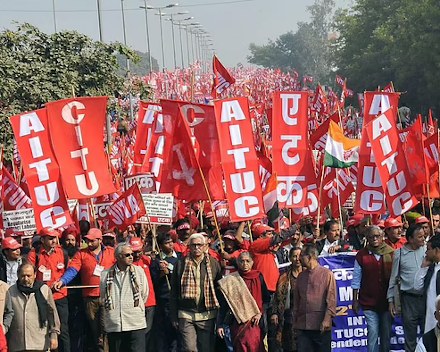
Through three Acts, passed under controversial circumstances especially in the Rajya Sabha, the government opened up the agricultural sector to foreign and Indian big business, began the process of abandoning procurement and price support for farmers, removed stock limits on essential commodities enabling big traders to hoard and sell them at artificially high prices, and liberalized rules for land acquisition by corporate entities even in tribal areas. It is pursuing anti-labour measures both directly and via several state governments. Critics of the government have argued that the draconian lockdown regime, under which protests and mobilization are difficult to carry out, is being used to push through anti-people reforms. They have questioned the logic of selling the country’s mineral wealth and industrial assets to foreign capital while talking of self-reliance. The brazenness of the regime is apparent in its scheme of ‘National asset monetization pipeline’ which envisages selling valuable public sector assets at throw away prices.
Meanwhile, the Indian economy is sinking deeper into severe recession. GDP in 2020-2021 is estimated to be nearly 10% less than in 2019-20. In April 2020 alone, 14 crore persons lost employment. Even with the resumption of economic activities across the country, the unemployment rate which touched 25% in April-May, remained high in mid-July 2020 at 11%. Though agricultural activities picked up with the arrival of the monsoon, the peasants facing a mountain of debt have been hit hard by sharp rise in input prices, with the government increasing petrol and diesel prices through huge additional taxes. Retail inflation has risen sharply. The limited increase in employment has been accompanied by poor wages and low incomes from self-employment.
A particularly obnoxious feature of the government’s handling of the pandemic challenge has been the manner in which it has put numerous obstacles in the path of state governments which are dealing with the pandemic on the ground. It has centralized decision making on lockdown strategies, on ensuring supplies of masks and other personal protective equipment (PPEs), on testing kits, indeed on practically all matters. In addition, it has given little financial assistance to states, and in fact owes the states large sums of money by way of GST compensation and tax devolution. It made a complete mess of handling the so-called second wave which resulted in a large number of deaths.
The Class Nature of the Regime in Rural India
What emerges from our account of the neoliberal regime is that ruling class policies have largely served the interests of the capitalist and landlord classes. Big business has been the biggest beneficiary. Taking into account the politics of the ruling dispensation, it would be correct to call it a ‘Corporate-Hindutva’ regime.
The fact that land monopoly has not been seriously eroded, despite a great deal of rhetoric on land reforms and a large number of legislations, reflects the exercise of state power by the landlord class. While Prof Mahalanobis estimated in 1960 that roughly 63 million acres of land would be surplus under prevailing ceiling norms, hardly one-tenth of this figure has even been identified as surplus and even less has been distributed.5 Likewise, while the green revolution had enabled a significant increase in agricultural output through increase in yields per acre, the agrarian policies of the Indian state including the green revolution have largely benefited the landlords and big capitalist farmers as well as sections of the rich peasantry. Even in the neoliberal reforms period, which has seen a deep and persistent agrarian crisis, the process of peasant differentiation has continued and a small section of rural exploiters consisting of landlords and big capitalist farmers have benefited from the neoliberal reforms and strengthened their control of land and other productive assets. On the other hand, data from the Census and from the national sample surveys including the latest survey of agrarian households carried out by the National Statistical Organization in 2019(Reference Year July 2018 to June 2019) show that the vast majority of the peasantry and agricultural labour remain poor, with average monthly household incomes abysmally low.
One may sum up the current agrarian crisis under the neoliberal regime in the following terms:
- There has been a significant slowing down of the growth of output and yield of most major crops
- Crop agriculture and animal husbandry have become unviable for a large majority of the peasantry
- The agrarian distress has been responsible, in the main, for the continuing tragedy of large scale suicides of farmers
- Rural employment has grown more slowly during the period of reforms than earlier. Nearly all the increase in employment has been of poor quality, characterized by informality and low earnings.
- The basic contradiction in the Indian countryside between the rural rich on the one hand and the mass of the peasantry and agricultural labourers on the other is intact and is very far from being resolved. Land monopoly and concentration of productive assets in the hands of landlords and big capitalist farmers as well sections of the rich peasantry continue to define the countryside in large measure. Land ceilings laws have been diluted and even reversed in many states. Oppression against dalits, adivasis and women remains an important and persistent feature of the rural economy and society.6
Overall, in class terms, the big bourgeoisie has benefited the most in the political economy of Indian development. Landlords, big capitalist farmers, and a section of the rich peasantry have also substantially benefited from neoliberal policies, though they are also facing increased volatility on account of opening up and exposure to international economic shocks. A section of the middle class – professionals, for instance – has also benefited to some extent. But the rural poor consisting of rural manual workers, poor peasants, and traditional artisans as well as sections of the middle peasantry have largely been victims of neoliberal policies and have seen a worsening of their livelihood prospects.
Concluding Remarks
The world has changed remarkably since India gained independence. The relatively greater autonomy that India had in implementing its strategy of development at that time has been eroded both by dramatic global developments and by the logic of the capitalist path of development itself which has entailed an increasing collaboration with foreign finance capital.
Three major developments of the period since 1990 have to be noted. One is the economic crisis of 1991 that resulted from the path of capitalist development pursued since independence. The second is the changed balance of class forces in the international arena following the collapse of socialist regimes in USSR and Eastern Europe in the period 1989 to1991. The third is the rise of Hindutva forces and the resultant rightward shift in Indian politics as well as in economic policies. It is remarkable that despite these adverse developments, the progressive movements and forces in India were able to slow the juggernaut of neoliberal reforms with mass action on both political and economic planes. For a short period from 2004 to 2007, it even proved possible to get important progressive legislations passed. These include the Tribal and Forest Rights Act (TFRA), the Right to Information Act (RTI) and the National Rural Employment Guarantee Act (NREGA). However, the balance of forces in the country has remained strongly in favour of the parties of the ruling classes, and the three decades from 1991 to 2021 have seen an intensification of neoliberal economic policies as well as the emergence of the aggressive communal politics of Hindutva. The economic policies of the Hindutva – led government have been even more neoliberal than those of the regime it replaced.
It is clear that a huge challenge lies ahead for progressive forces in India who wish to see pro-people economic policies implemented. But experience also suggests that the challenge can be met only through sustained class and mass struggles. The important initial victory of the year-long struggle of the peasantry, carried on with active support from the working class of India signified by the Union government’s decision to repeal the hated farm laws passed in July 2020, suggests once again that the people united cannot be defeated in the long run. •
This article first published on the Indian Researcher website.
Endnotes
- The rightward shift in economic policies of central and state governments from the early 1990s was also accompanied by the rightward shift in the Indian polity marked by the rise of Hindutva forces represented by the BJP, with the demolition of the Babri Masjid following the huge all India ‘Hindutva’-communal mobilization around the theme of ‘Ramajanmabhoomi’ being a key marker of this shift.
- The GDP series was revised in 2014. The GDP is now being reckoned in terms of market prices as opposed to factor cost, which was the case earlier. The numbers are now based on 2011-12 prices as opposed to 2004-05 prices. There have also been some changes in the methods of evaluation of output. All these have resulted in rather different numbers for growth rates of GDP from those reported earlier, but this need not detain us here.
- The rate of growth of GDP in China has come down over time, but is still high at about 7% plus.
- By contrast, the share of manufacturing in China’s GDP was 32% in 2011 according to World Bank data. It has declined since, but was still 26% in 2019, much higher than India’s.
- It is noteworthy that West Bengal which has just 3% of net won area in the country accounts for 23% of ceiling-surplus lands taken over and distributed. A large part of this redistribution took place under the Left Front government.
- The meticulous village surveys carried out by the Foundation for Agrarian Studies since 2005 in several villages spread across many States of India bring out the strong presence of landlordism as well as the emergence of a class of capitalist farmers and continuing differentiation in the countryside. Some of the studies have been reported in various issues of the journal Review of Agrarian Studies.


